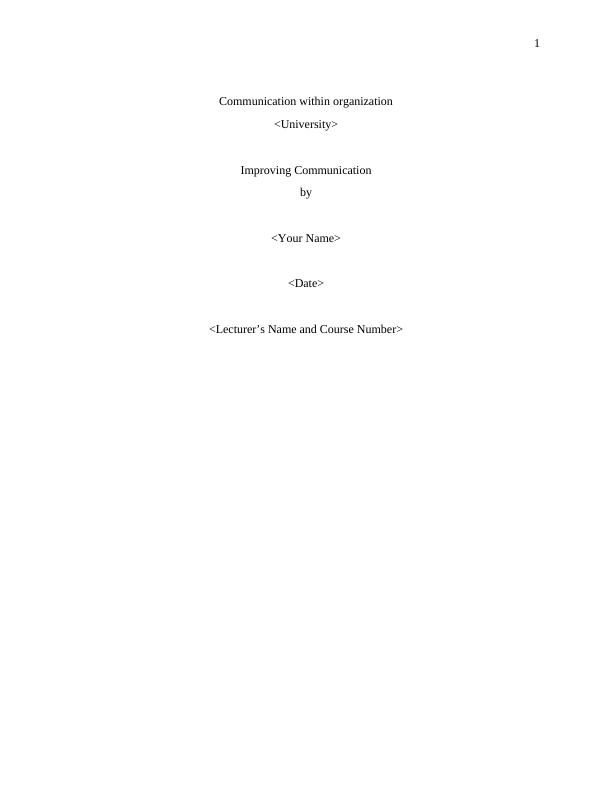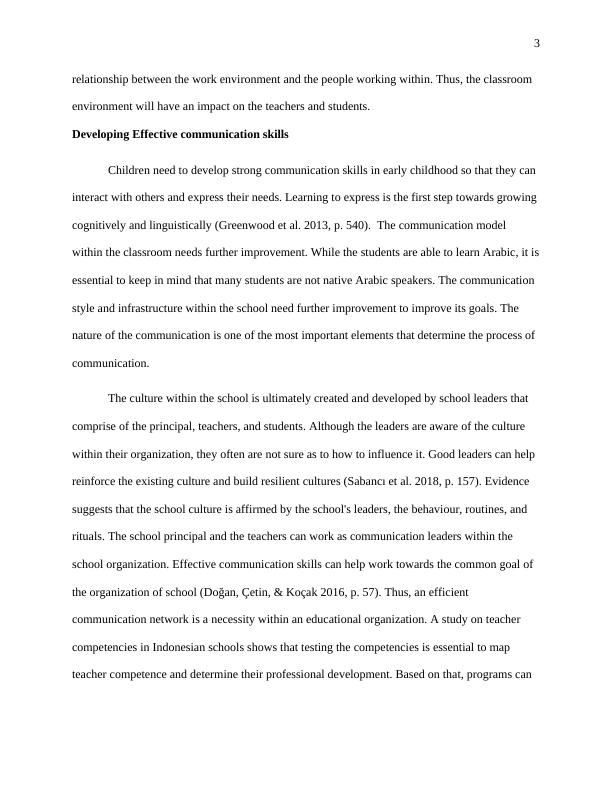Improving Communication within Organization
7 Pages1623 Words178 Views
Added on 2023-06-07
About This Document
This article discusses the importance of communication within an organization, specifically within a school environment. It describes the current communication structure and suggests ways to improve it, such as developing effective communication skills and creating a supportive work environment. The article also explores the use of technology in improving communication and offers tips for teachers to build purposeful communications within the school culture.
Improving Communication within Organization
Added on 2023-06-07
ShareRelated Documents
End of preview
Want to access all the pages? Upload your documents or become a member.
Communities of learners for effective teaching
|4
|618
|68
Critical Evaluation of Culturally Responsive Approaches in School Context
|8
|2463
|239
Developing a Culturally Responsive Learning Community
|19
|5110
|314
Teaching Assistant Level 3: Learning Experience and Utilization of Theories
|7
|1665
|87
A Policy on Inclusive Education in Schools: Route to Quality Inclusion
|4
|572
|26
Leadership in Education: Transformational, Servant, and Moral Leadership
|8
|2411
|299



